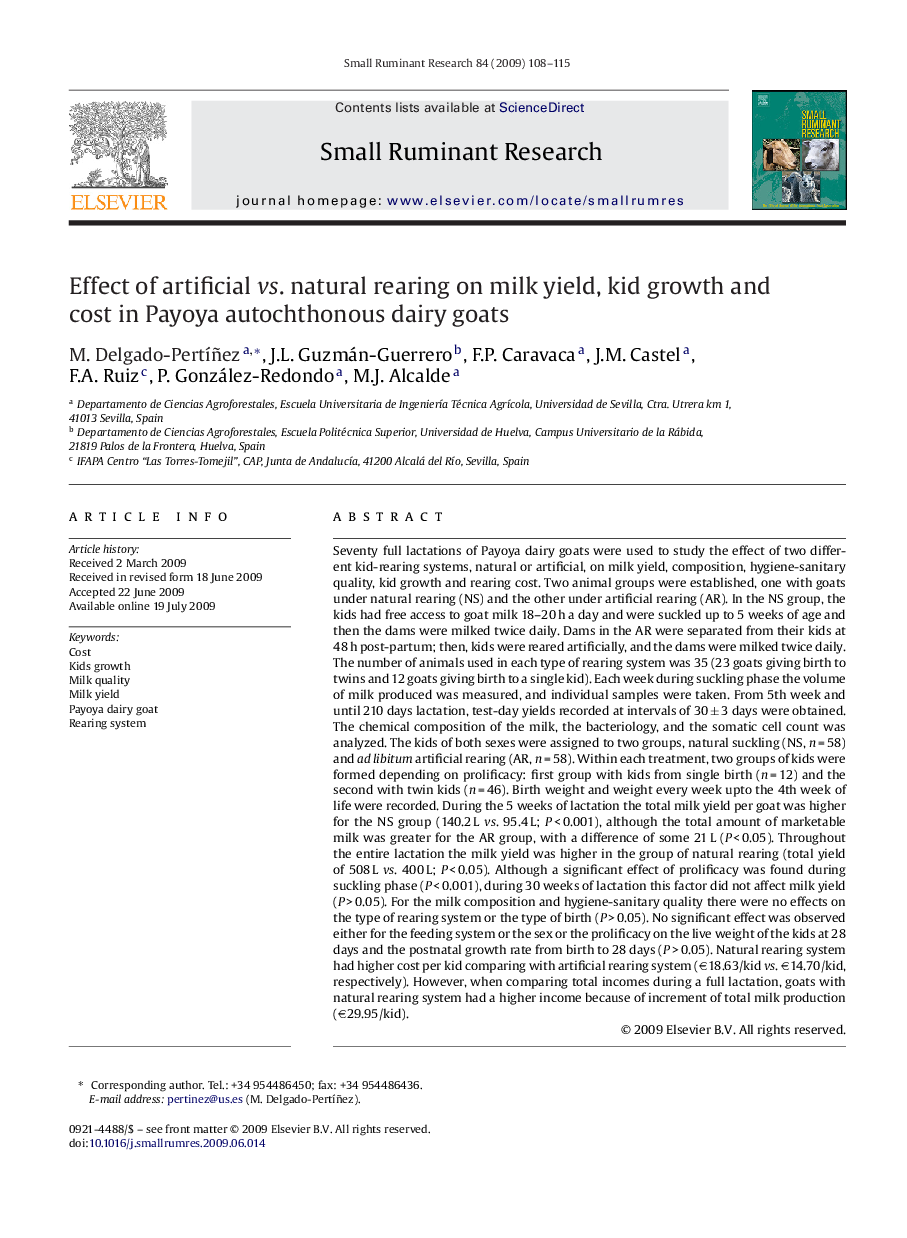| کد مقاله | کد نشریه | سال انتشار | مقاله انگلیسی | نسخه تمام متن |
|---|---|---|---|---|
| 2457768 | 1554408 | 2009 | 8 صفحه PDF | دانلود رایگان |

Seventy full lactations of Payoya dairy goats were used to study the effect of two different kid-rearing systems, natural or artificial, on milk yield, composition, hygiene-sanitary quality, kid growth and rearing cost. Two animal groups were established, one with goats under natural rearing (NS) and the other under artificial rearing (AR). In the NS group, the kids had free access to goat milk 18–20 h a day and were suckled up to 5 weeks of age and then the dams were milked twice daily. Dams in the AR were separated from their kids at 48 h post-partum; then, kids were reared artificially, and the dams were milked twice daily. The number of animals used in each type of rearing system was 35 (23 goats giving birth to twins and 12 goats giving birth to a single kid). Each week during suckling phase the volume of milk produced was measured, and individual samples were taken. From 5th week and until 210 days lactation, test-day yields recorded at intervals of 30 ± 3 days were obtained. The chemical composition of the milk, the bacteriology, and the somatic cell count was analyzed. The kids of both sexes were assigned to two groups, natural suckling (NS, n = 58) and ad libitum artificial rearing (AR, n = 58). Within each treatment, two groups of kids were formed depending on prolificacy: first group with kids from single birth (n = 12) and the second with twin kids (n = 46). Birth weight and weight every week upto the 4th week of life were recorded. During the 5 weeks of lactation the total milk yield per goat was higher for the NS group (140.2 L vs. 95.4 L; P < 0.001), although the total amount of marketable milk was greater for the AR group, with a difference of some 21 L (P < 0.05). Throughout the entire lactation the milk yield was higher in the group of natural rearing (total yield of 508 L vs. 400 L; P < 0.05). Although a significant effect of prolificacy was found during suckling phase (P < 0.001), during 30 weeks of lactation this factor did not affect milk yield (P > 0.05). For the milk composition and hygiene-sanitary quality there were no effects on the type of rearing system or the type of birth (P > 0.05). No significant effect was observed either for the feeding system or the sex or the prolificacy on the live weight of the kids at 28 days and the postnatal growth rate from birth to 28 days (P > 0.05). Natural rearing system had higher cost per kid comparing with artificial rearing system (€18.63/kid vs. €14.70/kid, respectively). However, when comparing total incomes during a full lactation, goats with natural rearing system had a higher income because of increment of total milk production (€29.95/kid).
Journal: Small Ruminant Research - Volume 84, Issues 1–3, June 2009, Pages 108–115